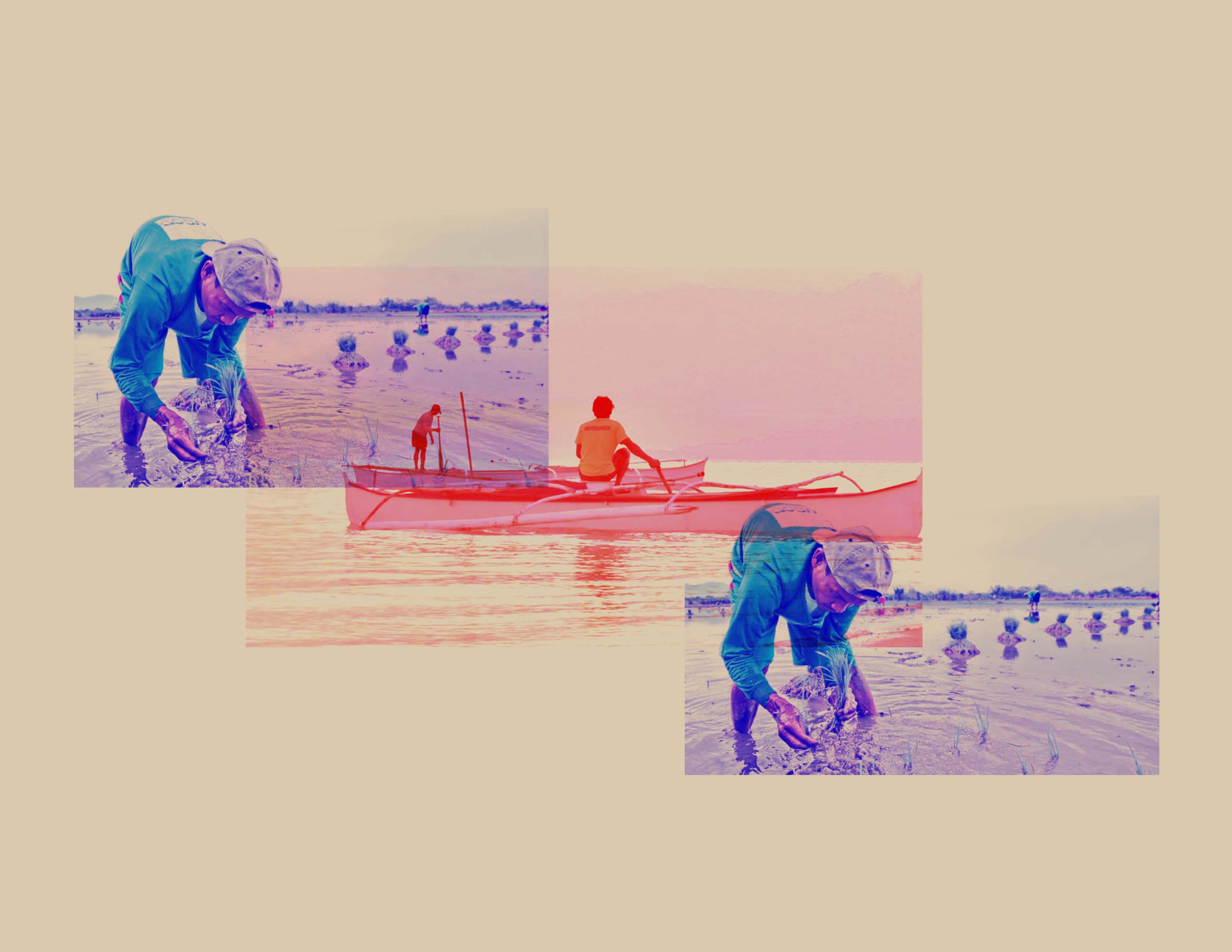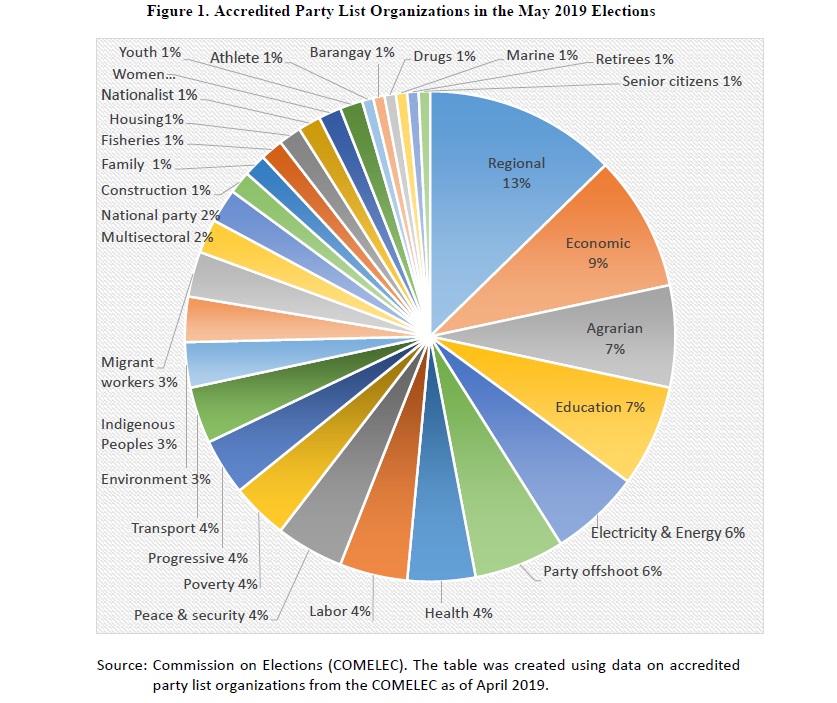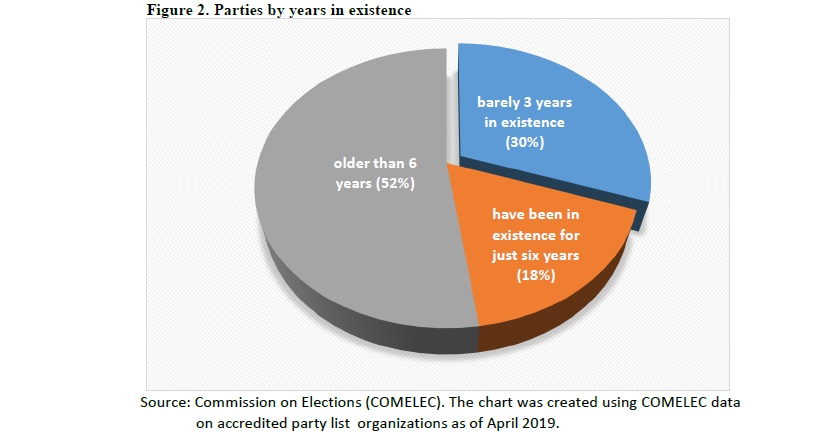
by Rogelio Alicor L. Panao, PhD*
So you completed your list of 12 senators to pick. Two weeks into the polls, you already have an idea which local candidates will deliver the goods. You are also pretty certain which district candidate will truly speak for your community.
But do you know you also have to choose a party-list organization on May 13?
What is the party-list anyway and why do we have to elect party-list organizations?
Broadly, a party-list system refers to a mechanism of proportional representation where candidates are elected through allocation based on an electoral list of candidates from different parties. Seats get distributed to each party in proportion to the number of votes they receive in the election.
The Philippine version of the party-list system is based on Secs. 5(1) and 5(2), Article VI of the 1987 Constitution which states that 20 percent of seats in the House of Representatives shall be allocated through a party-list system of registered national, regional, and sectoral parties or organizations. Sec. 5(2) provides that for three consecutive terms after the ratification of the Constitution, one-half of the seats allocated to party-list representatives shall be filled, as provided by law, by selection or election from the labor, peasant, urban poor, indigenous cultural communities, women, youth, and such other sectors as may be provided by law, except the religious sector.
Simply put, there are two kinds of representatives in the House: (1) the district representatives, our congresspersons, (2) and the party-list representatives, those who are nominated by organizations with winning tickets under the party-list system. Similarly, every three years, a voter casts votes for two kinds of representatives. But unlike district representatives who are chosen by individual candidates, the party-list representatives are elected by organizations.
However, we did not actually vote for party-list organizations until 1998. In fact, from the 8th to the 10th Congresses, the seats under the party-list system were filled by sectoral representation. Apparently, proportional representation can be a bit of a challenge in practice. Although the 1987 Constitution provided its legal basis, it left out to Congress the task of legislating the details. Republic Act No. 7941, the Party-List System Act, was enacted in March 1995 to finally provide an enabling law to the party list system. Through the Party-List System Act, Congress intended to “promote proportional representation in the election of representatives to the House of Representatives through a party-list system of registered national, regional and sectoral parties of organizations or coalitions thereof, which will enable Filipino citizens belonging to marginalized and underrepresented sectors, organizations and parties, and who lack well-defined political constituencies but who could contribute to the formulation and enactment of appropriate legislation that will benefit the nation as a whole, to become members of the House of Representatives.”
But who are the marginalized and underrepresented?
Unfortunately, there is no easy answer. Part of the difficulty is in the normative nature of the question. Not surprisingly, this very question would preoccupy not just the Commission on Elections (COMELEC) but also the Supreme Court in its effort to harmonize the party-list law’s obscure provisions.
In Ang Bagong Bayani v. Comelec (G.R. No. 147589. June 26, 2001), the Supreme Court held that while major political parties are not barred from participating in the party list elections, they must represent the marginalized and underrepresented groups identified in Section 5 of RA 7941. This means they must represent the interest of labor, peasants, the fisherfolk, the urban poor, indigenous cultural communities, the elderly, handicapped, women, youth, veterans, overseas Filipino workers, and professionals, through their “constitution, articles of incorporation, bylaws, history, platform of government and track record.” But the list of who are marginalized, according to the Court in Ang Ladlad LGBT v COMELEC (G.R. No. 190582, April 8, 2010), is not exclusive and may include groups or individuals who are similarly situated.
Eventually, the Court clarified in BANAT v. Comelec (G.R. No. 179271 April 21, 2009) that major political parties are barred from participating in the party-list elections, directly or indirectly.
But then again, in Atong Paglaom v. Comelec (G.R. No. 203766, April 2, 2013), the Supreme Court set new parameters and held that national parties or organizations, regional parties or organizations, and sectoral parties or organizations can participate in the party-list elections. National parties or organizations and regional parties or organizations need not even organize along sectoral lines nor represent the marginalized and underrepresented so as not to “deprive and exclude, by judicial fiat, ideology-based and cause-oriented parties from the party-list system.” Under the new guidelines, major political parties can participate in party-list elections as long as they do so through an independent sectoral wing registered under the party-list system.
Only sectoral parties for labor, peasant, fisherfolk, urban poor, indigenous cultural communities, handicapped, veterans, overseas workers, and other sectors that by their nature are economically at the margins of society need to represent the marginalized and underrepresented. For national and regional parties, it is enough that they consist of “citizens who advocate the same ideology or platform, or the same governance principles and policies, regardless of their economic status as citizens.” Similarly, the elderly, the youth, women, and professionals, need not necessarily be marginalized and underrepresented but “may ‘lack well-defined political constituencies,’ and can thus organize themselves into sectoral parties in advocacy of the special interests and concerns of their respective sectors.” (Atong Paglaom v. Comelec, G.R. No. 203766, April 2, 2013)
The new parameters obviously changed the playing field, as can be seen in the type of organizations seeking party-list accreditation in recent years. In the coming May 2019 elections, for instance, regional parties already comprise the largest group among accredited organizations (see Figure 1). Regional parties are also collectively the biggest among those whose application have been rejected, suggesting a propensity by regional parties to dip into the electoral mainstream. It is worth mentioning that Ako Bicol (AKB), a regional party, even topped the party-list elections, winning three seats in the May 2016 elections.

Party-list organizations are also relatively younger. In the May 2019 elections, about half of participating organizations have been in existence for just less than six years. About one in three accredited organizations seeking congressional seats, on the other hand, are joining the race for the first time (see Figure 2).
It is naive, however, to construe the increasing number of participating parties as broadening participation. Parties need only two percent to win a seat. But even with a large following, a party cannot have more than three seats. These two peculiar features of the Philippine party-list system incentivize the fragmentation of legitimate sectors into small parties and the filing of separate petitions for COMELEC accreditation.
In the May 2019 elections, six parties advocating labor rights and five parties working toward poverty alleviation got the COMELEC nod. Meanwhile, 10 parties advocating economic reforms are participating in the elections. This may sound like good news at first, considering decent wages, lowering inflation, poverty alleviation, and job creation, are perennially among the Filipino voters’ top urgent national concerns. In reality, however, organizations with similar advocacies compete against each other instead of joining forces. An organization of dubious origin and obscure advocacy that manages to obtain accreditation can win a seat under a low standard of electoral legitimacy. On the other hand, an organization may be advocating the policy demands of an overwhelming majority of our citizens but may likely remain inconsequential in the policy process because it will receive no more than three seats.
The two percent threshold and the three-seat cap also dilute the legislative effectiveness of winning organizations. Party-list members, for instance, have a success rate passing bills into law lower than half of the average of the typical legislator (see, for instance, Bautista and Panao, 2019).
As these flaws have institutional roots, the remedy must likewise require some form of institutional redesign. The next Congress may want to consider amending the Party-List System Act to determine who really should be allowed to participate in the party-list system, the extent of proportionality, the manner of winning seats, as well as the accountability of participating organizations and their nominees.
For now, the best we can do is to select organizations we believe genuinely represent the plight of the economically and politically powerless.

* Assistant Professor, Department of Political Science, University of the Philippines Diliman